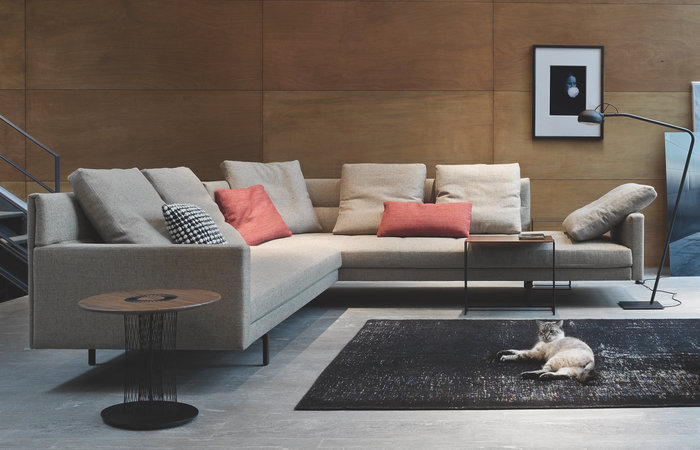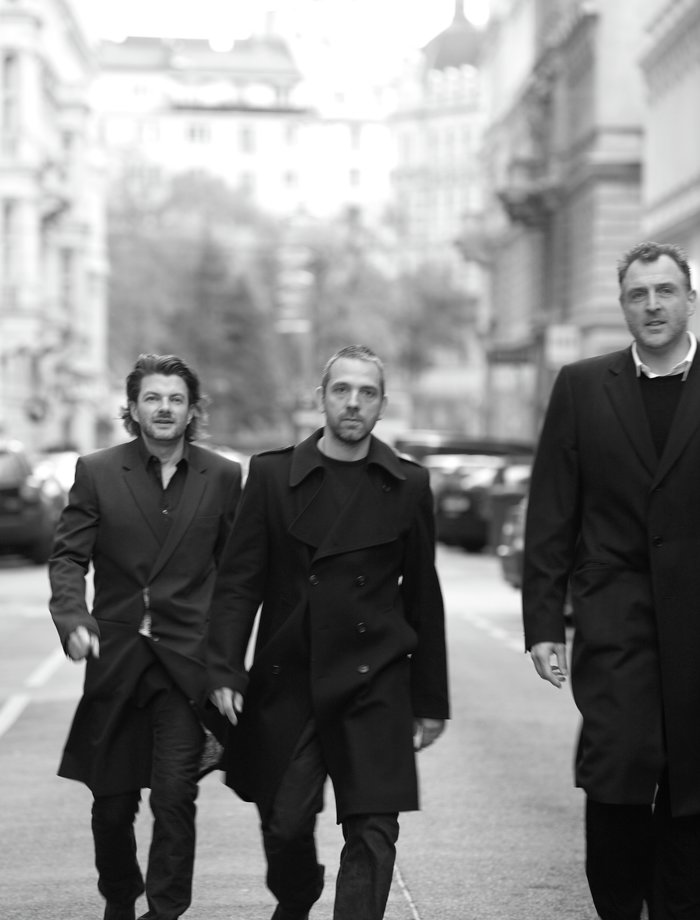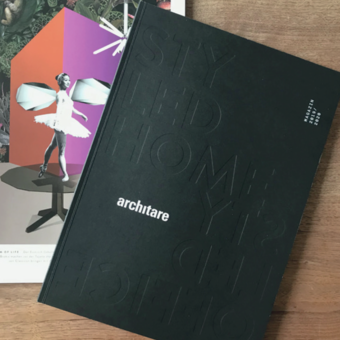EOOS is formed by Martin Bergmann (*1963), Gernot Bohmann (*1968) and Harald Gründl (*1967). The three already detected special synergies in their work during their studies in the Paolo Piva master-class at the University of Applied Art in Vienna. In 1995 they founded a joint studio. The trio work in the fields of furniture and product design, as well as shop design for customers like Giorgio Armani, Adidas, Alessi, Bulthaup, Dedon, Duravit, Walter Knoll, Keilhauer, Matteograssi and Zumtobel. For EOOS, design is a poetic discipline and a cultural service to society.
Chatting to EOOS
The three out-of-the-box thinkers carry out their ideas in their inspiring office loft in the centre of Vienna. They are supported by fifteen creatives from different backgrounds and professions in their projects from Milan to Toronto, London to New York, Berlin to Herrenberg. EOOS’ career is closely connected to the development of Walter Knoll. More than 25 successful models have been created since their first joint project in 1995.
The impetus was provided by Jason, a sofa that was expanded into an entire seating furniture family over the years. Prize-winning classics like Drift and George, bestsellers like the Living Landscape modular sofa programme, and office innovations like the Lead Chair followed, not forgetting the Gordon sofa, which was only recently presented at the Cologne Furniture Fair. EOOS has received more than 60 international awards to date, among which the Italian Design Prize Compasso d’Oro in 2004.
Something special is always created when the three designers put their heads together.
Barbara Benz met the three gentlemen for an interview.
architare: Which three properties characterise a good product these days?
EOOS: Good design does not have an expiry date. Design has an effect on society – it transmits values. And good products don’t pretend to be something they’re not.
What are the three properties that will distinguish a good product in the future?
Authenticity, poetry and sustainability will also be important in the future.
What do you appreciate most about your work as designers?
Collaborating with interesting enterprises and meeting exciting people with whom you can develop good friendships.
How strongly does a designer’s cultural background influence the design of a product?
We don’t actually believe in a local design language and, on the contrary, strive to design our objects in such a way that they can also be understood in an intercultural context. We are glad to be able to live and work in Austria, as we have an incomparably high quality of life here. But our customers, as well as our products, are international.
What is your personal favourite from the last few years?
The Italian Futurist Fortunato Depero, for example. He uses design as a poetic discipline – he has exaggerated this approach and exhibited almost more poetry in his work than the market is able to absorb. Yet he was successful as an industrial designer; he designed the amazing Campari bottle, for example. That fascinates us.
What is the most superfluous product that you’ve encountered?
So much stuff is unnecessary – we know that, yet we keep on buying. We need to be more conscious of individual things. Afterwards we ask ourselves; what did we actually want that thing for? A house can function with very little stuff. Everyone should listen to their inner voice when deciding what they need.
What is the most relevant product that you yourself have designed to date?
Subjectively, it is always what is being created in our studio at the time! Objectively, time will tell which products remain relevant.
Who would you like to design a product for?
It’s happening at the moment: we are developing a toilet for the poorest of the poor as part of an initiative of the Bill & Melinda Gates Foundation. We are working together with the Swiss research institute Eawag on a sanitation concept that does not require water or piping. You regard design as a political act.
As a consequence, would you say that everyone who buys design is politically active?
If so, in which direction? It’s about reforming our lifestyle, and design can play an important part in the shift. It’s about designing a new lifestyle, in which growth develops into a qualitative value and not a quantitative one. Designers will use new tools to design life cycles instead of only the consumable form of products. Design processes are becoming more participatory, which means that users are increasingly involved in the creative process. Our concept of innovation, which is very technical, is shifting in the direction of social innovation. Consumers are increasingly also becoming producers, and in the end use will become more important than possession.
The concept of poetry is very popular at the moment and Romanticism is reloaded the world over. Is it also time for EOOS to reconsider its “poetic analysis” and perhaps even to even modify it?
Poetic analysis is not a strategy, but rather a fundamental approach to design. It lasts and will not become unfashionable and it doesn’t need to be modified. Archetypes and rituals remain in the way that we look for them. It is the tension in their relationship with reality that varies.
How long have you been working for Walter Knoll?
We’ve been working for Walter Knoll since 1997. So 16 successful years!
Walter Knoll offers excellent craftsmanship and advanced technology
How did this fruitful collaboration come about?
As we battled through life as a young design studio in the 90’s, shortly after having completed our degree at the University for Applied Art, our former professor established initial contact with Markus Benz. Thus, we had the opportunity of visiting the company in Baden-Württemberg and introducing ourselves there. Markus Benz showed us the company and the book “125 Jahre Knoll“ [125 years of Knoll]. He thought we could have a look at the past and previous development of the business and, based on that, develop concepts for Walter Knoll’s future image. We drove back to Vienna with this commission. And came back with the design for Jason, an elegant sofa with an intelligent mechanism for folding away the armrests to create a daybed. We were left breathless with what a success Jason turned out to be.
What do you particularly appreciate about this company?
Basically, the excellent craftsmanship and the advanced technology. But it’s also Markus Benz’s ability to guide and lead the creative process and to make brave decisions.
How does one get customers to invest more in quality and high-value products?
Our task is first to design high-value products. There are other specialists to bring them to the customers. Your “Gordon“ sofa has just won the 2013 Wallpaper Award.
Does an award like this spur you on as a designer, or is it more like a booster for selling the model?
It’s a wonderful award that we’re very happy about...

Do you only work together as a trio or are you also friends in your private life?
We work together every day and of course we’re friends, as well.
Your office building in Vienna has a prominent past. How did you obtain these premises?
Well, before us the premises were used by President Heinz Fischer for his election campaign, before that the architectural office Coop Himmelb(l)au was located here and before that it was the fashion designer Helmut Lang’s studio. We came to know about the premises through a customer’s builder.
And who would you like to be the tenant after you?
We are not planning to move out yet...
Where do you prefer to spend your lunch break?
There are some nice restaurants and venues close to our offices. When we’re not travelling, the three of us eat out in the city centre of Vienna every day.
Why?
Lunchtime is a welcome interruption: it’s fun to leave the studio and to come back with new ideas…
How often are you in Herrenberg?
At least once a month!
What would you recommend to people travelling in the Walter Knoll territory?
Apart from the central Walter Knoll glass building, the Mercedes Benz Museum and the Weissenhof Estate in Stuttgart. And for dinner! Da Gino in Nagold!
Thank you very much for talking to us.

Fotos: ©
Delos und Inipi
Duravit
Udo Titz











